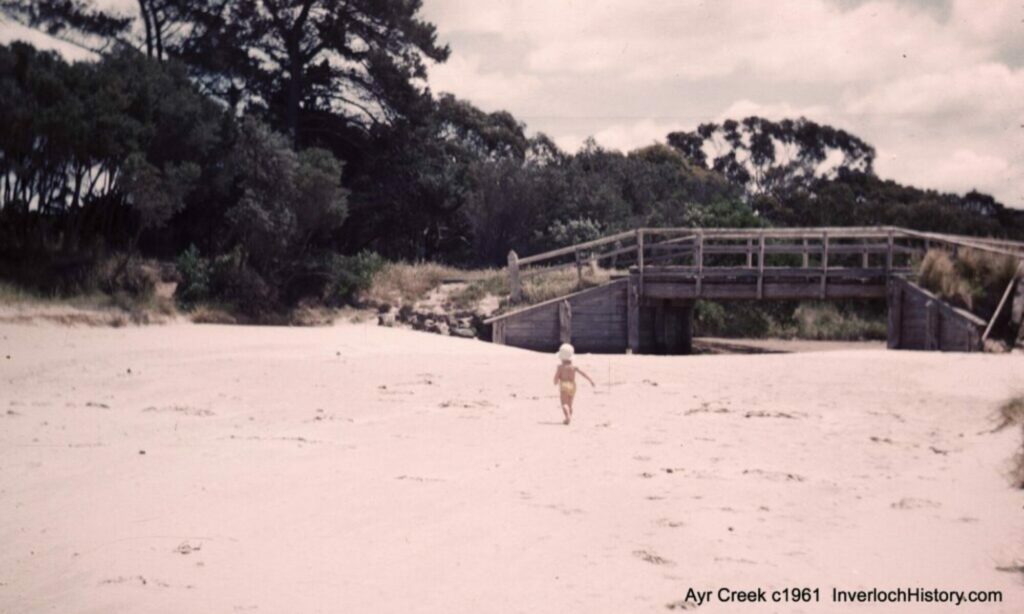New Year’s Day 1935 , a young girl was brutally murdered at Inverloch by a serial killer, an event which shocked the residents and holiday makers of this quiet and peaceful township.
Foreword
This book is a response to the interest shown in our first publication “A Short A-Z History” released last year (Ed:1998).
The material has been collated by Bob Sartain from newspaper reports of the time.
The author, as well as recounting the events, has painted a picture of Inverloch as it was in 1935.
K.G.Howsam. President, Inverloch Historical Society
Ormond 1930
On Sunday the 10th November 1930, two small boys entered a vacant house in Wheatley Rd., Ormond, a suburb of Melbourne: to their horror they found the body of a young girl tied and gagged. She was face down on the floor. After their initial shock the boys raced home and told their parents.
Police and detectives were quickly on the scene.
The girl’s underclothing was used to tie her hands and ankles and a gag had been thrust into her mouth.
An autopsy revealed that she had been strangled to death and strangely she had been tied up after death.
She had not been sexually molested.
Detectives quickly established that the murdered girl was Mena Griffiths, aged 12 years, who had been reported missing the previous evening, Saturday.
Investigations revealed that on Saturday she had been playing with a group of girls, including her two younger sisters, in Fawkner Park not far from her home in South Yarra.
A man, a stranger, approached Mena and asked if she would accompany him on a message and she agreed. Mena’s sister, 8 years old Joyce, watching her sister walking across the park with a stranger, ran to them and asked where they were going. Mena told her she was going on a message with the stranger and she would be back shortly.
Her movements were traced to St Kilda, three kilometers from Fawkner Park, where the man bought her a parcel of fish and chips. Somehow she was lured to the empty house in Ormond, ten kilometers from Fawkner park.
Detectives brought hundreds of suspects into Russell Street Police Headquarters for questioning but there was no evidence on which to make an arrest.
Second Ormond Girl
Nine weeks after Mena’s death, a sixteen year old girl, Hazel Wilson, left her home in Melton Drive, Ormond, to attend a dance with a friend.
She failed to return home that night.
Her brother, Frank, found her dead in a vacant block next day.
Parts of her clothing were used to bind and gag her in similar circumstances to that of Mena Griffiths.
Again there was no evidence of sexual molestation.
Police now realized that there was a serial killer on the loose and they were desperate to make an arrest.
However every lead became a dead-end.
The news of the murders eventually discontinued in the newspapers, but the police now under pressure from their superiors kept the files of the murders open.
Inverloch 1934 – 35
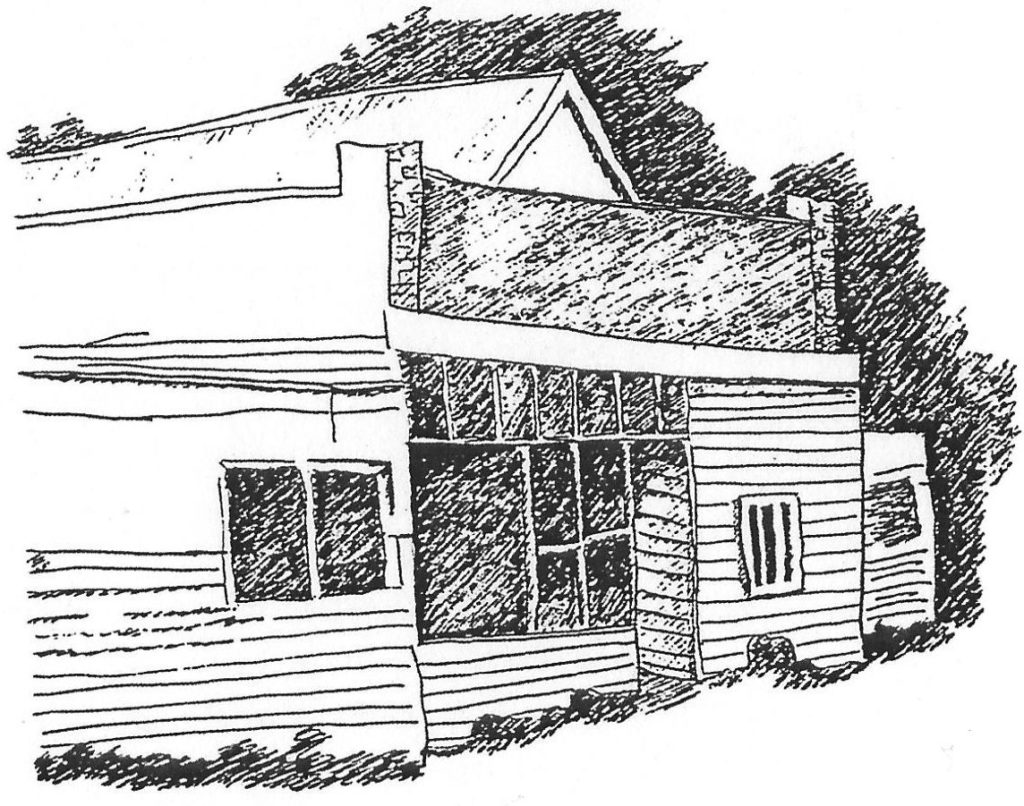
During the 1930’s Inverloch was rapidly becoming the most popular seaside town in South Gippsland.
Situated on Anderson Inlet with its sheltered waters and safe sandy beaches within walking distance, Inverloch lured thousands of holiday makers each year.
The township consisted of two stores, a few shops, a police station, a post office, a school, a large public hall and a garage to service the rapidly growing motor trade.
An hotel, and two guest houses catered for the holiday makers who desired home comforts.
Holiday houses were available for rent.
SEC power and piped water was not connected to the town but some buildings had their own generators for electricity and water from wells and tank water was in plentiful supply.
A bus service ran to Wonthaggi daily to connect with the Melbourne train.
The main streets in the township were well formed but once out of the business area the streets became sandy tracks.
Resident and holiday homes were built at irregular intervals along these tracks and thick tea tree often surrounded the homes and grew unattended on the vacant blocks.
The surrounding district maintained mixed and dairy farms and Inverloch had a small fishing industry.
The biggest employer was the tourist industry especially in the peak holiday season when many casuals were employed.
The shops and stores also employed extra staff to cope with the holiday crowds.
By far the greatest number of holiday makers were the campers. They pitched their canvas tents of all shapes and sizes along the foreshore often in congested conditions.
Tent City went from in front of Pine Lodge to Ayr Creek and even beyond, in primitive conditions, as far as Flat Rocks.
Tent dwellers had the essentials, a metal meat safe hung under a shady tree, a primus stove for cooking and a most important item, the canvas water bag.
Motor cars, mostly tourers from the 1920’s parked alongside the tents, the seats of these cars were often used as an emergency bed.
Many of the inhabitants of these tents were Wonthaggi coal miners having a well earned rest from the mines.
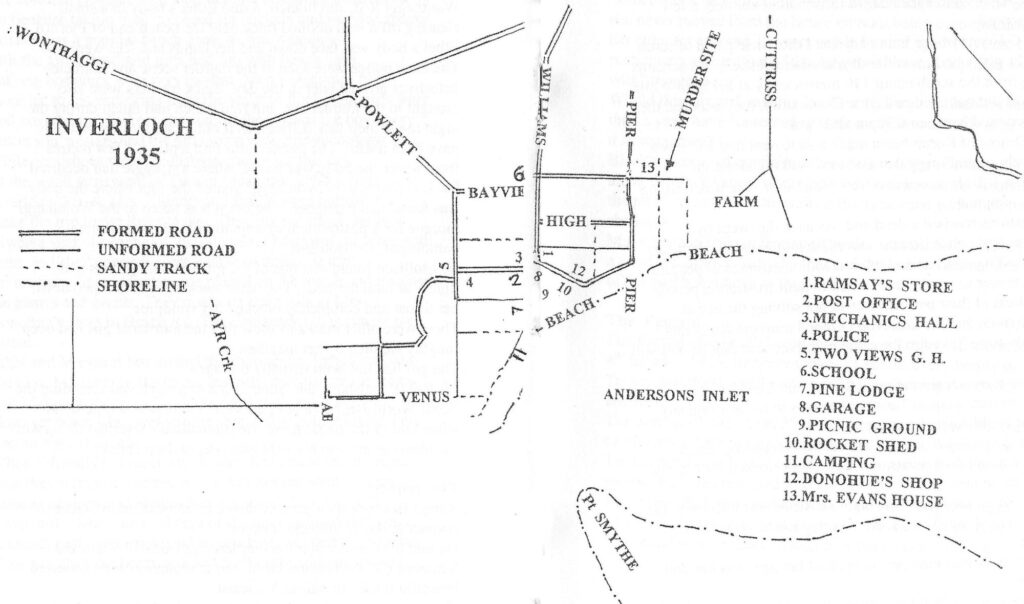
Inverloch New Years Eve 1934
With night fast approaching the New Years Eve revellers began their parties. The guest houses and the hotel held private parties for their guests. The public hall in A’Beckett Street. held the traditional New Years Eve ball.
The tent dwellers gathered in groups and sang and danced as the night wore on.
A number of Scottish miners from Wonthaggi added to the revelry with sentimental tunes from their bagpipes.
So a rowdy and happy crowd saw the “Old Year” out.
Inverloch Tuesday New Years Day 1935
For the past years Inverloch had become famous for its Regatta day which was held every New Years Day.
The organizers were hard at work early to ensure the program ran smoothly. Fun events included climbing the greasy pole, catching the greasy pig, sheaf tossing, nail driving and foot races for all ages.
A big attraction was the bathing beauty contest held near the pier and another event that created interest was the Regatta boat parade with the men and ladies parading their best finery.
The shop keepers were also about early preparing for the arrival of thousands of day visitors. This was Inverloch’s biggest trading day of the year and big sales of food, ice cream, sweets and beer were expected.
Boiling water was also an important item as customers queued all day to have their tea pots and billy cans filled for sixpence (5 cents).
The day visitors began to arrive early to secure the best picnic spots. They came in all kinds of vehicles; horse drawn, motor cars, farm trucks and tractors and quite a few push bikes.
The recent construction of all weather roads leading into Inverloch from surrounding districts was a big improvement for motorists and other travellers and encouraged more people to travel to the Regatta.
On arrival families selected their picnic spot and spread their travelling rug on the ground and set up their picnic essentials.
The children changed into their bathing costumes and headed for the beaches taking their coloured tin buckets and wooden spades. Cricket was a popular beach game as was rounders with the girls. Boys and girls had fun with beach balls.
Bathing costumes were very modest. Men’s costumes had shoulder straps and skirts from the waist to thighs and girls were well covered up. To keep the sun off their heads the boys wore cotton sou’westers and the girls wore wide brimmed straw hats. White sandshoes were the fashion choice for this day.
At the small settlement of Tarwin Meadows, 25 km. from Inverloch, Mr. & Mrs. Knights and family were preparing to make the trip to the Regatta day. They invited Ethel Belshaw, a twelve year old friend of their daughter Margaret, to come with them, as Ethel’s parents were unable to make the trip.
On reaching Inverloch the girls played on the beach and watched the games and events. They made several visits to Mrs. Donohue’s shop in Beach Rd.(The Esplanade) to purchase ice cream.
Ethel and Margaret last visited the shop about 4pm. Ethel was ahead of Margaret in the queue and after buying her ice cream told Margaret she would wait outside the shop for her.
However when Margaret left the shop a few minutes later there was no sign of Ethel.
When Ethel did not meet Mr. & Mrs. Knights at the arranged time they were not worried at first but as time went by they became anxious and at 6pm they contacted First Constable J McCarthy who was in charge of the three man police station.
A search party was organized by residents assisted by campers.
They searched the beach and scrub all night without success.
The search was resumed next morning, 2nd January, and within a few minutes Mr. J McGinnes, Secretary of the Wonthaggi RSL sub branch, found Ethel’s body in a small clearing off a well defined track near the beach end of Pier Rd.
Ethel’s body was face down and her hands and legs were tied.
The local police were soon at the murder scene and homicide detectives arrived later in the day. Black trackers were also brought to the murder site, but rain which had fallen during the night made their task difficult as it obliterated tracks that may have been useful. The trackers did find a place, a few metres from where the body was found, where a struggle had occurred.
Dr. L O Sleeman of Wonthaggi visited the spot where the body was found and examined it before it was taken to the Wonthaggi morgue for a postmortem examination by the government pathologist, Dr Mollison.
Dr Mollison found that one of the girl’s stockings was tied tightly around her neck. The other stocking was rammed down her throat and completely blocked her windpipe.
There were other marks to show that the murdered girl had been roughly handled by her assailant.
The girl had not been sexually outraged.
Mr.Robert Belshaw, the father of the dead girl, was attending the Scout World Jamboree at Frankston, Victoria as a lone scout when told of the tragic news. He immediately returned to Tarwin Meadows to be with his wife who was in deep shock.
The Inquest
Robert Belshaw then gave evidence of identification before the coroner at the Wonthaggi hospital.
He told the coroner that the murdered girl was 12 years and 8 months old, of medium build, fair complexion and possessed beautiful thick fair hair to her waist.
She was wearing a knee length white fugi silk frock with a.blue cloth belt, brown stockings and tan shoes.
She looked one or two years older than her actual age.
The Investigation
Police and detectives interviewed hundreds of residents and holiday makers and appealed for information but only a few came forward.
Mrs. R G Evans whose house adjoined the dense patch of scrub where the girl’s body was found was adamant she heard screams coming from the scrub about 140 metres away at 8.15pm. While detectives did not disregard Mrs. Evans story, they believed the death occurred between 6.30pm and 7pm.
Nurse Elmore of Korumburra made a statement that she saw a girl closely resembling Ethel Belshaw walking along the Leongatha Rd. about 6pm on New Years Day. She was walking with a young male.
Investigations reached a dead end. As each day went by detectives and police despite, travelling hundreds of kilometers to surrounding districts and interviewing thousands of people, were no nearer to a solution. To add to their frustration people were critical of their performance in not solving the crime.
It was obvious that the unsolved Ormond murders four years previously were linked to the same murderer, and that he was still at large.
Detectives were accumulating evidence that Ethel knew her assailant so they went to Tarwin Meadows to try and find any clues that could solve the crime.
They found that Ethel seldom left Tarwin Meadows, which comprised about 40 persons, most of whom worked for George Black as share farmers.
Ethel was of an unusually retiring disposition and lived with her family in one of the clusters of red cottages which stand on a green flat.
One of her principal interests, in spite of her age, was her doll collection.
Her school was in a building which was used in turn as school, church and social hall.
She was acquainted with boys of the district, but as far as her father knew, she had no friendship with them.
“Ethel was a very quiet and obedient girl” her father said “and she never moved from the house without being accompanied by her elder sister, aged 19 years or her brother aged 11 years. I particularly warned her of the dangers of having anything to do with strange men.”
Would this shy girl, making her first visit to Inverloch for more than a year, have consented to walk away into a lonely area with a strange man ?
Blacktrackers had confirmed there was no sign of a struggle along the track except where her body was found, substantiating the police theory that she walked from the shop with somebody she knew.
Many holiday makers fearing the killer was still in Inverloch kept a strict watch over their children and they never had the free run of the beach and bush as they had previously.
The Funeral
The funeral of Ethel Belshaw was held on Friday afternoon the 4th January. 1935. Representatives of almost every family in Tarwin Meadows and Tarwin Lower were among those who attended.
The cortege of more than 30 motor cars moved slowly up the hill to where the Tarwin Lower cemetery is located. Pupils from the Tarwin Meadows State School lined the road as the hearse passed, and then marched into the cemetery.
Mr. Robert Belshaw, and his wife, their two daughters aged 19 and 3 years and a son aged 11 years were the main mourners.
The burial service was conducted by the Rev. E. Hewlett.
In Inverloch the police and detectives worked long hours following the leads available to them but without success.
After a few weeks the township returned to normal and the unsolved murder was no longer a news item in the daily papers.
The police found the most baffling aspect of the case was that nobody came forward with information from the time Ethel left the shop after buying her ice cream and presumably walking away with her murderer. Police thought her conspicuous waist length fair hair would have held attention in the crowd.
Inspector Superintendent J O’Keefe was in charge of the investigations and he worked his men hard to try and solve this frustrating case.
Leongatha 1st December 1935
On the evening of the 1st December 1935, a six year old girl was reported missing to the Leongatha police.
She was June Rushmore who had been playing in a recreation reserve and began to walk home in the late afternoon.
Her body was found by searchers in McPherson’s lane about a kilometer from her home.
Her death was caused by strangulation and the body was bound and gagged in the same fashion as the other three victims.
Detectives from Melbourne immediately raced to Leongatha to investigate this now familiar pattern of murder.
Two boys came forward and said they saw a man near the scene of the murder. He was pedaling a push bike and wore a dark suit. The boys could not identify him as it was almost dark at the time.
Once again the detectives were frustrated as this was the Great Depression era and thousands of people owned push bikes as their only mode of transport.
Thousands of people were unemployed during the depression years and would accept any kind of work to earn money.
Arnold Karl Sodeman
One such person was Arnold Karl Sodeman, born 1900.
He had turned to a life of crime early in life and had spent twelve months in a reformatory for forgery when he was 18 years old.
After his release he and another man held up the station master at Surrey Hills station.
A shot was fired and the station master was wounded
Sodeman was caught and convicted and sentenced to three years hard labour at Pentridge Prison, Coburg. He was later transferred to the French Island prison in Western Port Bay. However he escaped from there but was soon recaptured. Another year was added to his existing sentence.
Sodeman was released from prison in 1926 and settled down and married.
The couple had a daughter.
Shortly after marriage the Great Depression arrived causing mass unemployment.
Sodeman, his wife and daughter travelled around the country-side looking for odd jobs.
At one stage he lived at Ormond.
At the time Ethel Belshaw was murdered, the Sodeman family were living in a rented cottage at Leongatha, 25 kilometers from Inverloch.
He was employed as a labourer in a road work gang.
After the death of Ethel Belshaw, Sodeman was one of thousands questioned by the police. At this point the police were unaware of his criminal record. He was always a quietly spoken man and was not easily upset.
Sodeman’s reaction to a workmate’s remark during a tea break at Dumbalk aroused suspicion.
The workmate was reading a paper which read that the police were looking for a man with a push bike. The workmate suggested jokingly that as Sodeman had a push bike it could have been him that was near the scene of the Leongatha murder. Sodeman glared at his fellow worker and strode away in a rage after throwing the contents of his mug away.
This was quite out of character for the quietly spoken man.
The next day one of the workmen reported the incident to the police Detectives who went to the campsite brought Sodeman in for questioning to their temporary headquarters at Leongatha.
Sodeman Confesses
After hours of questioning, Sodeman broke down and told of the murder.
He was cycling back to Dumbalk after spending the weekend at home in Leongatha, when he saw June Rushmore walking towards her home. The child knew him and he offered her a lift on his bike. After a short distance he stopped the bike and said she could walk the rest of the way. She continued on foot and Sodeman ran after her. She became afraid and ran into some bushes.
Sodeman then described how he grabbed her around the neck and she started to scream. He strangled her and then used a belt to hold a gag in her mouth after she went limp.
He also bound her after death.
Sodeman also gave details of the three previous murders,
Mena Griffiths, Hazel Wilson and Ethel Belshaw.
The people who knew the quietly spoken Sodeman could not believe that he could commit such crimes.
His wife and daughter were devastated.
The Leongatha townspeople were in an ugly mood and the police fearing violence escorted Sodeman through a rear door of the lock-up and drove him under heavy guard to Melbourne.
The Trial
Sodeman was only charged with the murder of June Rushmore and the trial opened at the Melbourne Criminal Court on 17th February 1936.
The defense counsel pleaded insanity after it was found that Sodeman’s father and grandfather died in mental asylums. However the jury found Sodeman guilty and the judge sentenced him to death. Appeals went to the High Court and the Privy Council in London, but to no avail. Arnold Karl Sodeman’s appeals had been rejected.
Sodeman took his fate very calmly and five days after the appeal rejection he was hanged at Pentridge Prison. As usual with executed prisoners, he was buried there in an unmarked grave.
A post mortem conducted on his body revealed that he suffered from a chronic inflammation of the sheets of tissue covering the brain. This condition was aggravated by alcohol.
The details of Ethel Belshaw’s movements from the ice cream shop to her place of death were not printed in the newspapers as Sodeman’s trial only dealt with the death of June Rushmore, his last victim.
So closes the story of a serial killer and his four victims with a special interest relating to Ethel Belshaw who died in Inverloch, normally a quiet and law abiding sea side town in South Gippsland.
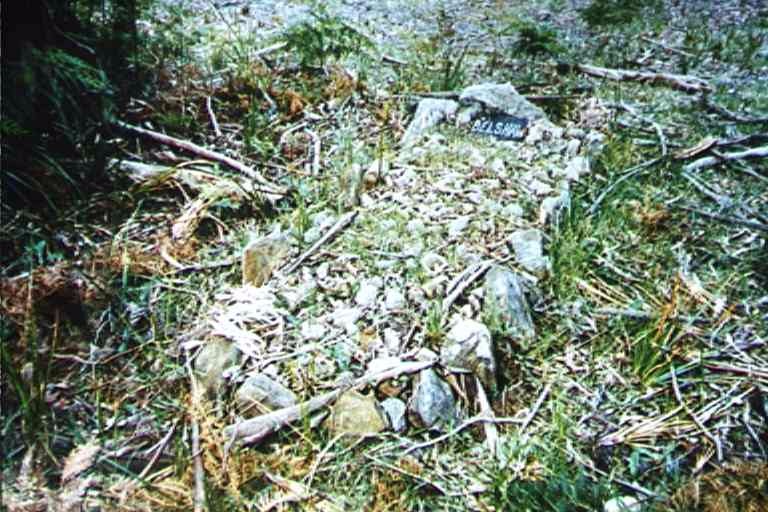
Footnote
Like most country cemeteries, Tarwin Lower cemetery is a quiet lonely place, set back from the Inverloch – Tarwin Lower Rd. Graves date from the last century to the present.
One inconspicuous grave is that of Ethel Belshaw who was buried 4th January 1935. She was the third victim of Arnold Sodeman, the serial killer. It appears that some caring person has attempted to keep the grave identified: a row of loose stones mark the perimeter of the grave and the make shift head stone is a house brick painted black with the name “BELSHAW” painted in white letters. This is a very temporary arrangement and the grave identification could be lost forever in the near future.
It would be gratifying if some of the clubs and societies in the district would donate enough funds to at least erect a permanent headstone on this unfortunate child’s grave.
Although it is over six decades since Ethel’s death it remains a tragic, but important chapter in Inverloch’s history.
R.Sartain, September 1998
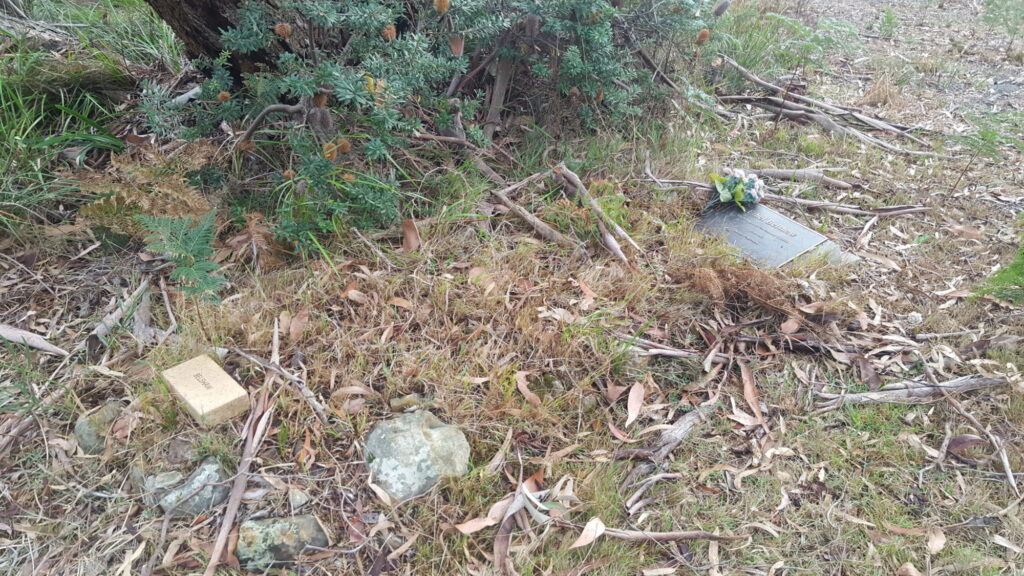
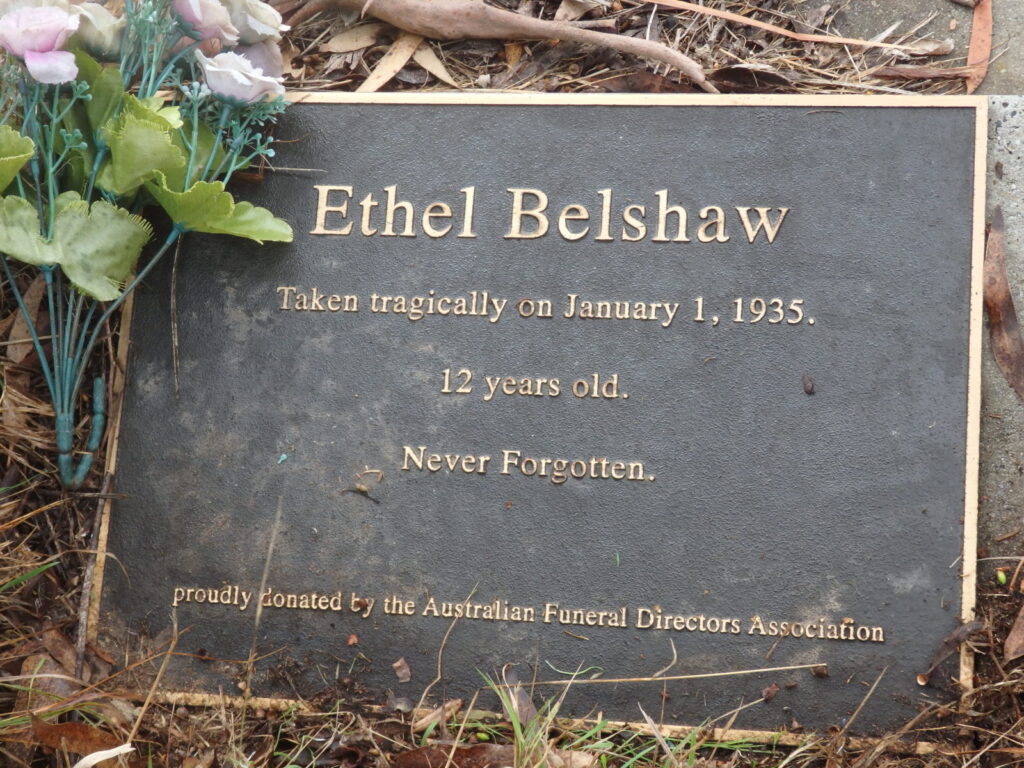
Sources of Information
- “The Age” 3rd January 1935
- “The Argus” 3rd January 1935
- “The Argus” 4th January 1935
- “The Argus” 5th January 1935
- “The Argus” 7th January 1935
- “The Argus” 8th January 1935
- “The Argus” 10th January 1935
- “The Argus” 11th January 1935
- “The Argus” 12th January 1935
- “Giant Book of Crimes That Shocked Australia” by Alan Sharpe 1982
- “The Great Southern Star” 10th February 1988
- “The Great Southern Star” 24th May 1988
About the author:
Bob and Jean SARTAIN first came to Inverloch in 1969 and later bought a holiday house in Lohr Aveneue in 1975.
When Bob retired in 1988 they built a new home on the holiday house site.
Jean Sartain founded the Inverloch Garden Club in 1988 and both Bob and Jean were foundation members of the Probus Club of Inverloch in 1991.
Bob became a foundation member of the Inverloch Historical Society and continues to be active with his research and with the writing of this book.
Title: Anderson Inlet Inverloch – Murder in Inverloch – The Sodeman Murders
Author: Bob Sartain
Published by: Inverloch Historical Society Inc.
ISBN: 1876594004
Copyright © September 1998. First Edition February 1999
The Inverloch Historical Society Inc has endeavored to ensure that the information contained in this book is correct at the time of publication.
However, it cannot accept responsibility for mistakes in this book, whether negligent or otherwise. Comments should be forwarded to the Society at PO Box 46 Inverloch VIC 3996 for possible inclusion in future editions. The Inverloch Historical Society’s files are available, and researchers and students are invited to access further information available from the Society.
